Meet Your Seeds
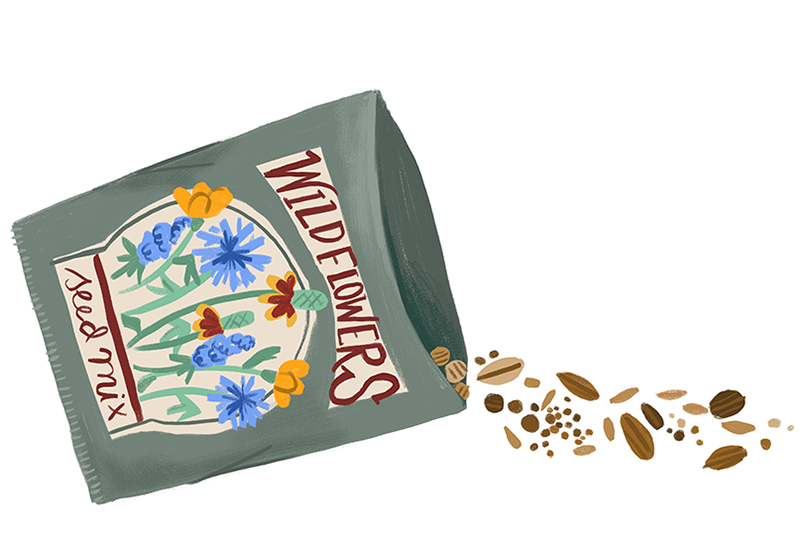
Sowing the seeds of love? Maybe, maybe not. “Native” seed packets don’t always live up to their labels. ILLUSTRATIONS Caitlin B. Alexander
WE’VE ALL SEEN THEM: seed mixes that claim to be packed with “local favorites,” but what’s really in those packets? The “Texas Wildflower Mix” you thought was completely harmless might be anything but.
Just as we like to know that the eggs we select are from chickens who roam free and springing for a pair of TOMS shoes makes us feel socially responsible, Wildflower Center Plant Conservationist Minnette Marr says we have a “real responsibility to be smart consumers” when it comes to seed selection as well.
For years, Marr has been hearing from gardeners who, having sown from seed mixes they believed to be full of Central Texas natives, found anomalies: flower-strangers that no one in their networks of plant nerds could identify. So she and a master naturalist class decided to dissect a bag of wildflower seed mix with “Texas Garden” in the name and see what they found.
Of the three categories the group identified — exotic, translocated and native to Central Texas — the exotics and natives tied for the greatest representation. As Marr points out, “Every species is native somewhere.” It’s not a matter of villainizing certain plants; it’s about being informed.
So how do you avoid stranger danger (or, worse, familiar plants that are misconstrued as native) when selecting seeds? Marr recommends visiting the U.S. Department of Agriculture’s PLANTS Database — which includes both natives and non-natives — and simply typing in the names listed on your bag. But be sure to zoom in for the most complete picture. An initial search for California poppy (Eschscholzia californica), which Marr calls “the perfect example of a translocated plant,” makes it look native to all of Texas. When you zoom to the county level, however, you can see it’s native to only three of the Lone Star State’s 254 counties.
Once you’ve gotten all private-detective on that seed’s origins, don’t forget that the Wildflower Center’s website happens to be home to one of the largest native plant databases in North America (8,588 species!), where you can learn everything from bloom period and growing conditions to nicknames and lore.
Explore the Findings
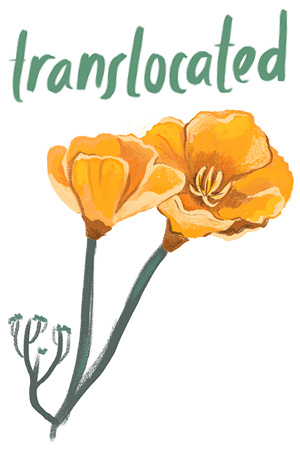
TRANSLOCATED PLANTS, which the USDA defines as plants not native to the portion of the continent where they are currently found, are often perceived as true natives, but they actually come from nearby places. The four found in Marr’s study (such as California poppy, depicted left) hail from Mexico, California, Nevada or other parts of Texas. Marr explains that plants from hotter ecoregions often have the ability to “tolerate, even thrive, in the microclimates created in urban settings.” Species that do well in the Chihuahuan Desert Ecoregion of El Paso County, for instance, have been able to succeed in the hotter and drier Austin area due to the urban heat island effect.
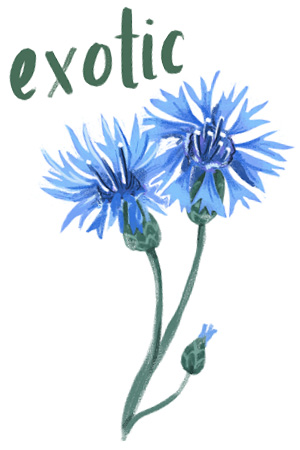
Exotic
THE TERM MIGHT BE EXCITING when it comes to food or lovers in romance novels, but when applied to plants, “exotic” — which means a plant is from another continent — is a red flag. The nine exotic plants found in the study’s “Texas Garden” (including invasive cornflower, Centaurea cyanus, depicted right) ranged from as far afield as North Africa and Europe.
While Marr says a very small percentage of exotics are actually invasive, there are a few that can harm our environment, so it’s best to avoid them as a general rule. In some cases, she explains, seemingly innocent exotics can outcompete natives of the same genus because the plants and pathogens that kept them in check where they originated “just aren’t here yet.”
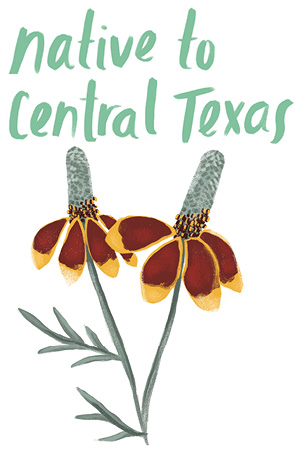
IN MARR’S STUDY, the native to Central Texas group contained some beloved usual suspects — such as Indian blanket (Gaillardia pulchella), Texas bluebonnet (Lupinus texensis) and Mexican hat (Ratibida columnifera, depicted left) — which are recommended for all the same reasons the Wildflower Center champions native plants: They’re hardy and adapted to the region; their presence is threatened by invasive species as well as a variety of human activities (agriculture and development, for two); and they provide a sense of place. After all, what says “Texas” better than a field of fiery Indian blanket or a bluebonnet-lined drive through the Hill Country?
More Bloom for Your Buck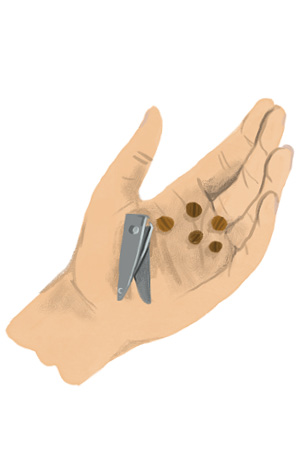
A couple seed-sowing tricks can help improve yields and create strong, uniform gardens. Wildflower Center Nursery Manager Sean Watson dropped some knowledge on us about how best to scarify and stratify seeds for increased germination.
Scarifying
Watson says it’s a good idea to scarify anything with a hard seed coat. With a plant like Texas mountain laurel (Sophora secundiflora), it can mean the difference between getting one or two plants out of 50 seeds and “100 percent, almost.” The appropriate method depends on seed size. For bigger seeds, Watson likes to use a stone grinder, holding the seed with needle-nose pliers and making sure not to let it heat up. For smaller seeds, he suggests a dip in sulfuric acid; for thin coats, five minutes or less should work, while thicker coats may take up to 30 minutes. “Make sure you rinse the acid off really well,” he advises, “otherwise it can eat through and kill the embryo.” Other methods include: lacerating the seed with a sharp knife, nicking it with nail clippers or roughing up its coating with sandpaper. Scared of acid and sharp objects? Watson says you can also boil water, let it cool just a bit, then add seeds that have spent a day or so in the freezer. “They’ll want to expand, so you get cracks.”
Stratifying
This process, which involves putting seed in a plastic bag with growing media (Watson suggests vermiculite for smaller seeds, perlite for larger) and chilling it, serves as a sort of simulated winter. The amount of time a seed is in the cold depends on the plant: Perennials such as milkweeds, columbines and penstemons can be stratified from two to four weeks; trees and shrubs: 30 to 90 days. be sure to check your bag daily and keep the media moist. “If you see germination, go ahead and sow ’em,” says Watson.
Ready to get sowing? Browse our list of native seed suppliers.

